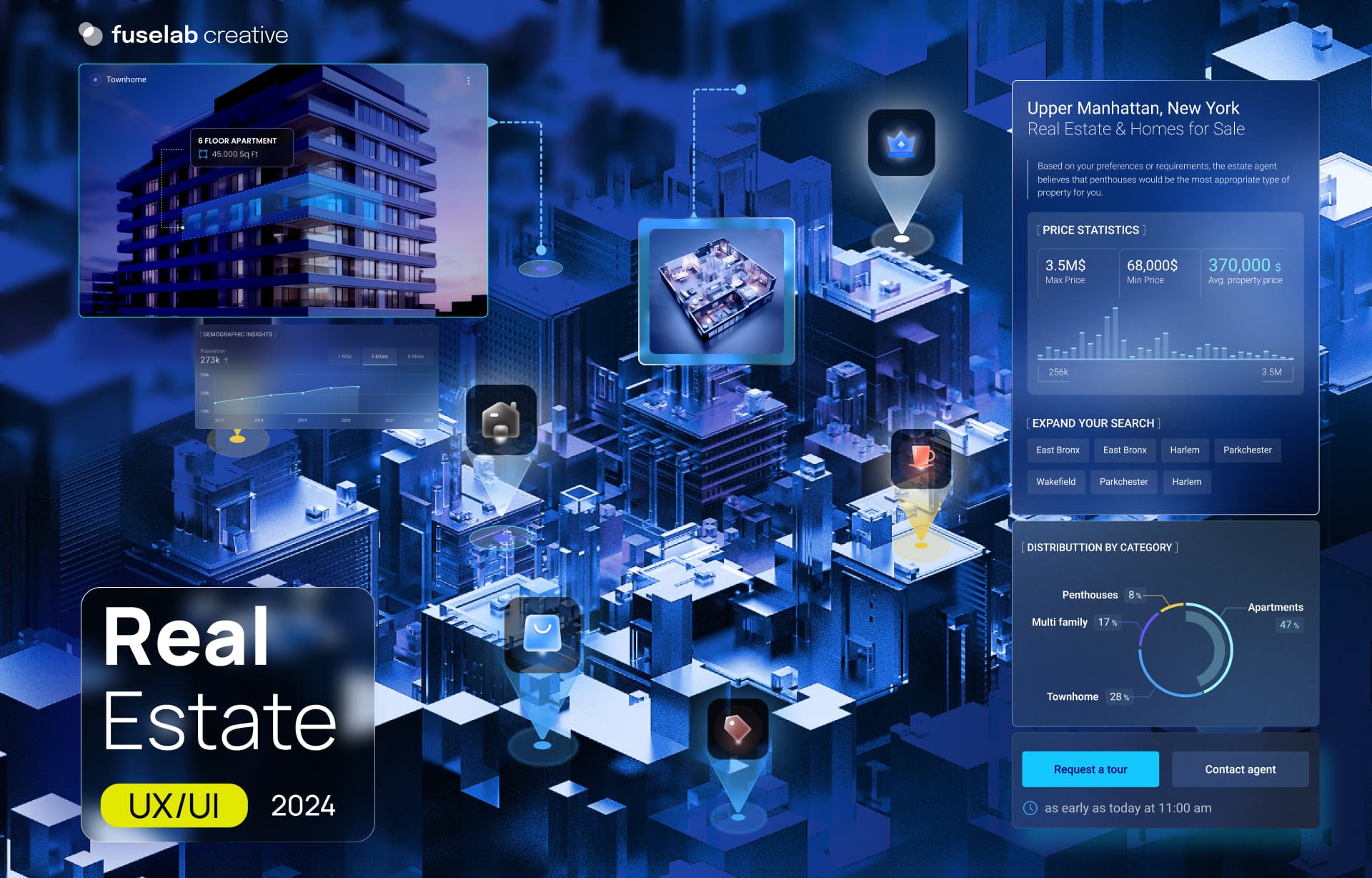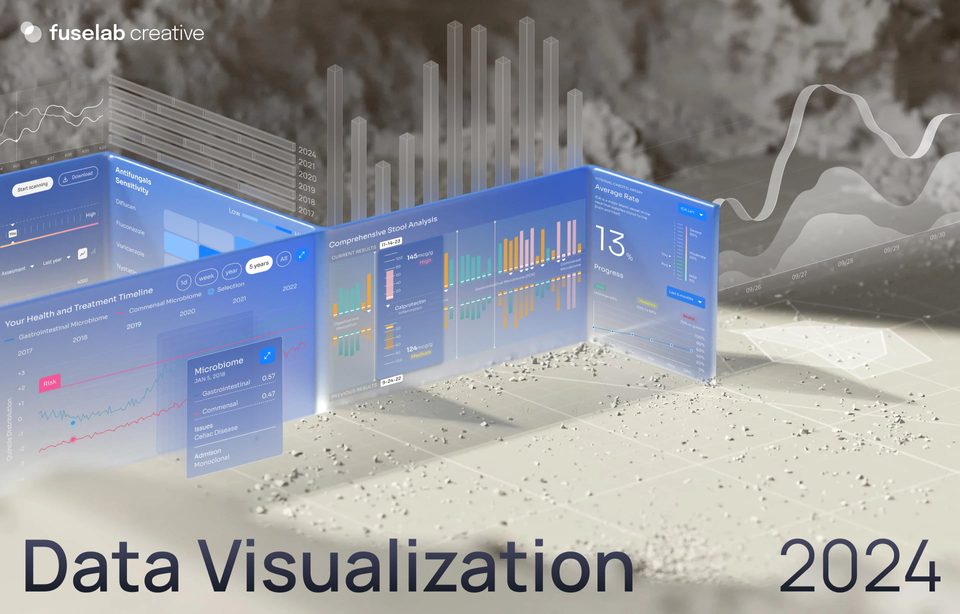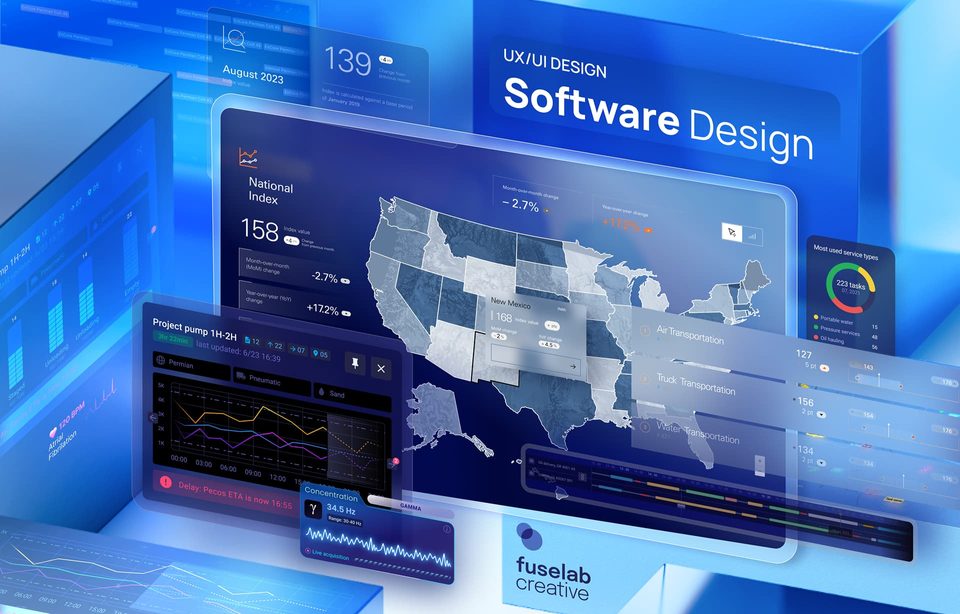Unlocking Leads & Sales: The Power of Real Estate UI/UX Design

If you had to think of your life’s most important, life-changing, and expensive buying decision, first on your list would most likely be a property purchase.
This one decision will certainly impact you and your family for decades. Investing in a home or a rental property will change how you live, who you interact with, and how you manage your finances for years!
Naturally, as the decision is so momentous, arriving at it is also a long and thorough process. So, if you are on the other side of the decision, as a real estate seller/marketer, it makes sense to pull out all the stops to attract and convince potential buyers.
In the digital world, a real estate buyer’s journey starts online. According to the National Association of Realtors (NAR), a staggering 97% of all homebuyers use the Internet in their home search. Only once they are convinced about a property do they get in touch with the realtors, which effectively means that there is no other way to connect with a buyer directly! No real estate agency can afford to ignore online outreach efforts.
Providing a detailed, accurate, and intuitive online search experience is vital to getting buyers to pick up the phone and make an appointment to view a property. Real estate UI/UX, thus, plays a critical role in helping to promote sales and marketing for realtors.
Why UI/UX Matters in Real Estate
As customers shift online, they demand a more enriched experience for their property window shopping. By implementing the best real estate design trends, an agency can influence users’ perceptions of the company, showcase the buildings on their portfolio, and nudge them to become clients.
A thoughtfully designed real estate website or app can:
Enhance User Experience: A user-friendly interface and smooth navigation can engage and aid even the least digitally inclined buyers find what they need online. Intuitive search features, interactive maps, and personalized recommendations streamline the property search process, especially for older buyers.
Attract with Compelling and Detailed Visuals: While high-resolution photos are the bedrock of real estate website UI, a more immersive experience is needed to stand out in a crowded marketplace. 360° virtual tours and AR/VR experiences can add a fresh dimension when executed and integrated correctly, and completely cement the buyer’s appetite for purchasing before actually viewing the property in person.
Naturally, traditional details such as features, square footage, floor plans, and neighborhood details must be handily displayed to save time and avoid frustration.
Increase Conversions: A well-optimized UI/UX real estate design guides users seamlessly through the conversion funnel, taking them from property discovery to inquiry and, finally, transaction. Intelligent real estate design ensures clear calls to action, persuasive visuals, and simplified forms that lead to higher conversion rates are present on the website.
Ensure Mobile Accessibility: With the rise of mobile usage (76% of homebuyers use a mobile or tablet device during their search), realtors must lean into UI/UX design principles to prioritize the mobile responsiveness of their digital assets.
Push notifications: In mobile apps, agencies can leverage the real estate app UI to actively engage with potential customers with instant alerts personalized to their search choices, location, and more.
How to design a real estate website
We know optimizing online traffic is critical to getting more would-be buyers in your doors, but what constitutes a crowd-pulling and customer-satisfying real estate website or app?
Here are some best practices our UI/UX team has put together:
-
User First Approach
This is possibly a user’s biggest buying decision, and he/she will take it very seriously indeed. Hence, the design team must ensure that every property UI/UX design element is thought through, keeping the user at the heart of the process.
- Understand Your Target Audience: The first step in designing a real estate website or app is conducting user research. Find out your target audience, what they need, and their key pain points, and tailor the experience to cater to their preferences.
- Focus on Usability: Remember, the house is not the hero. A good real estate website is all about providing a quick and easy path to lead the buyer to the right property. A clear and intuitive navigation structure, search filters, clear labeling, and logical page hierarchy are a must.
- Mobile-First Design: We have covered this earlier, but the importance of mobile-friendly design warrants a second mention. Ensure your website and app are at the very least responsive, hopefully, adaptive design has been developed where needed, and, of course, optimized for all devices.
- Personalization: Online visitors have come to expect at least a modicum of personalization from most websites. Bring in features such as saved searches and property recommendations to satisfy the need for a more tailored experience and stand out from your peers.
(Optional reading: Check out this article on the UI/UX Design Trends for 2024 to deep dive into the topic)
2. Don’t Skimp on Content Creation
Once you have the user journey down pat, it is time to turn your attention to making the properties look their best. While the focus is on property pages, you must also consider the SEO aspect of content creation while building your website.
- Invest in High-Quality Visuals: Professional photos and captivating virtual tours are crucial for showcasing properties. Use high-resolution images, 3D tours, and drone footage to create an immersive experience.
- Accurate and Up-to-date Information That Goes Beyond the Basics: Ensure visitors get all the details they desire, from square footage and floorplans to unique features and neighborhood amenities, and that everything is updated. When discussing the property, stick to the facts and use clear and concise language, avoiding jargon.
- Remember Google SERPs: Don’t ignore SEO content while building your content strategy. To be more visible to buyers trawling the Internet, add some space and allocate resources for blogs, social media, and more.
3. Optimize for Lead Generation:
A great-looking website or app can only be considered successful if visitors become paying clients. Therefore, good real estate UX/UI design builds pathways to conversions throughout the website.
- Use Clear CTAs (Call to Action): Give specific CTAs to guide the users down the sales funnel. Use CTAs like “Schedule a Viewing,” “Contact our Agent,” or “Apply Now” at appropriate points on the website.
- Create Landing Pages and Optimize for Paid Advertising: While organic discovery is a key consideration in SEO and website design, real estate UX must also be built to accommodate paid advertising campaigns. This could be in the form of landing pages, free consultations, and advertisements of unique properties.
- Lead Capture Forms: One of the ways to turn casual visitors into potential clients is to get them to sign up with their contact details. It is the job of the UI/UX design team to make it easier for users to express interest. Integrate forms in specific places and reward people who fill them.
4. Accessibility:
Real estate buyers can come from various backgrounds, age brackets, and income groups. It is essential to ensure that real estate digital assets are open and easy to use for everyone. Property UI/UX design must factor in provisions for visitors with disabilities, older prospective buyers, or users from non-English backgrounds.
5. Testing and Tweaking:
The last but certainly one of the most vital steps while building a real estate website or app is testing! Try to test the finished product with a group of actual users. Their feedback can go a long way in improving user journeys and design. Realtors must also keep in mind that UI/UX is not a one-time job; you must continuously test, refine, and adapt the product to stay updated with the ever-evolving real estate landscape.
Bonus – Strong Back-End:
Often, the website works perfectly, but the user experience breaks down when the shift happens to physical contact. The real estate firm must ensure that there is always someone at the back end to answer phone calls and emails promptly.
UI/UX Tools Used in the Real Estate Industry
Here are some of the most popular tools used for UI/UX design in the real estate sector:
Wireframing & Prototyping Tools:
The core of real estate web or app design starts with low-fidelity mockups and interactive prototypes. These help the design team, as well as the clients, visualize the website or app’s layout, user flow, and functionalities before starting the final coding process.
The most popular options are Figma, Adobe XD, and InVision.
User Research Tools:
UI/UX teams use a mix of surveys, heatmaps, and platforms to gain insight into their target audience’s needs. These insights are then used as a framework for building the website or app.
Some tools are
- Survey tools: Google Forms or SurveyMonkey
- Heatmaps and Analytics: Hotjar and Crazy Egg
- User testing platforms: UserTesting and Lookback.io
Design & Development Tools:
Once the core design is established, it is time to turn the prototype into the final product. Some of the following tools will be used in this phase:
- Graphic design: Adobe Photoshop, Sketch, or Illustrator
- UI design: Figma, Sketch, and Adobe XD
- Development: Webflow, Javascript, and programming languages like HTML, CSS,
Other Tools:
Design teams often bring in more sector-specific tools to accommodate the needs of real estate firms. These are:
- Matterport or Vuze to create 3D virtual tours.
- Integrating MLS (Multiple Listing Service) to manage a large number of changing property listings and updates.
We used some of the abovementioned tools to design a dashboard for EstateLink. The design provided users with updated and accurate property information at their fingertips.
Challenges and Solutions in Implementing UI/UX Design for Real Estate Businesses
Despite understanding the benefits of UI/UX design, real estate businesses often fail to prioritize it. Why?
Limited Resources: Small real estate businesses may lack the resources and expertise to invest in UI/UX design. Solution: Outsourcing design tasks to a specialized agency or using pre-designed templates and tools.
Large Amount of Complex Data: Real estate is a shifting market, and displaying property listings comprehensively is often beyond the capabilities of simpler websites and in-house teams. Solution: Work with a UI/UX design agency to include robust APIs, data pipelines, and integrations with third-party platforms.
Balancing Functionality and Aesthetics: With so much data to showcase effectively, the visual aspect of the website and app falls by the wayside. Solution: Collaborate with designers, developers, and stakeholders to design an appealing interface without compromising functionality.
Updating to Integrate Technological Advances: New technologies such as augmented reality (AR), virtual reality (VR), and artificial intelligence (AI) can be challenging for realtors. Solution: Leverage professional expertise to include these advancements.
Conclusion
Today’s real estate sales trajectory is mainly digital, and realtors must invest to build a strong online presence to compete with literally everyone. However, this is easier said than done! Many real estate businesses struggle to walk the fine line between aesthetics and functionality.
Working with an experienced UI/UX design agency can combine the best of both worlds. By prioritizing user needs, embracing best practices, and overcoming data challenges, UI/UX professionals can create websites and apps that drive engagement, conversions, and customer satisfaction.
If you want to implement the UI/UX strategies outlined in the article above, our real estate UI/UX design services are the perfect starting point! As a leading UI/UX design agency, we have the expertise to help your real estate business unlock its full potential. Get in touch to book a free consultation!

Browse more

Data Visualization Trends 2024
